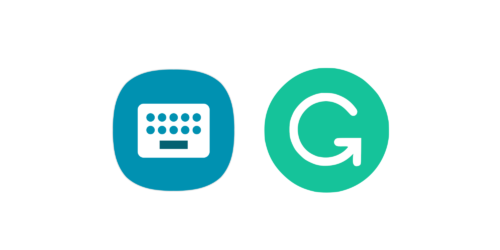Peer Feedback: Grading Tool versus Assessment Tool
Peer feedback is a powerful classroom assessment tool that you can leverage to support students’ learning (Patchan et al, 2015; Yu & Schunn, 2023). Particularly if your goal is to shift towards a more student-centered teaching approach. Are you interested in learning more about peer feedback? Consider reading these Faculty Learning Hub posts:
Post 1: Planning and Facilitating Effective Peer Assessment.
Post 2: Leveraging Peer Feedback as a Learning Tool.
Difference between an Assessment Tool and a Grading Tool
An assessment tool is a set of methods like tests, quizzes, projects, and observations meant to give feedback on students’ learning. It helps teachers understand where students are in their learning journey, their strengths, and areas to improve (Black & Wiliam, 1998). A grading tool, which is a type of assessment tool, focuses on assigning scores or grades to students’ work based on specific criteria. The goal for grading is usually to evaluate students’ achievement of learning objectives or standards and report on students’ achievement (DeLuca, Cheng, & Volente, 2019).
The main difference between an assessment tool and a grading tool is their purpose and focus. For example, when you use a method like peer feedback to engage students, encourage critical thinking, and promote collaborative learning, then you are using it as an assessment tool. However, when you assign grades to peer feedback and use the results as a part of your students’ final grade, it becomes a grading tool. Grading tools usually have high-stake purposes.
Rethink reliance on peer feedback for high-stakes assessments
Peer feedback has been proven to enhance learning and to engage your students in the learning process. However, the efficacy of peer feedback here heavily relies on how it is used. When students give feedback to each other without affecting their final grades, it helps them provide constructive feedback that supports learning (Tejeiro et al., 2012). But if you start grading this feedback and make it count towards the final grades, research suggests that it may undermine its intended function for varying reasons. Below are some implications of using peer feedback as a grading tool.
Reduced focus on learning goals
When you connect peer feedback to the students’ final grades, it may shift the focus away from the primary learning goals, with students concentrating more on achieving a favorable grade rather than actively engaging in the learning and feedback process.
Diminished authenticity
When you assign grades to peer feedback, particularly higher grades, there is a risk that the pressure associated with grades may compromise the authenticity of the feedback. Your students might feel tempted to prioritize positive or lenient comments in an effort to boost their peers’ grades. In this situation, your students may concentrate more on the grading aspect than on the genuine improvement and learning opportunities that feedback offers.
Feedback received may not be used to improve learning
Your students may not appreciate feedback from their peers as much when grades are attached. This situation could lead to missed opportunities for them to reflect on and leverage the feedback to enhance their learning, as the emphasis shifts toward the assigned grade rather than the constructive insights provided.
Heightened emotional tension and anxiety among students
When you assign grades to peer feedback, students may experience the weight of responsibility for their peers’ academic standings. This situation can create a dilemma, as students find themselves torn between offering genuinely constructive feedback and merely providing feedback aimed at elevating their peers’ grades.
Strain on Peer Relationships
Introducing grades into peer feedback could strain relationships among your students in the classroom. Students may blame other students for their academic performance in your course. This dynamic could adversely impact the positive classroom environment crucial for effective learning. It is essential to consider how the introduction of grades in peer feedback might influence the dynamics and interactions among students, aiming to maintain a supportive and collaborative learning atmosphere.
Conclusion
Using peer feedback as a grading tool raises several concerns. It may shift focus away from learning goals towards achieving grades, compromise the authenticity of feedback, hinder its use for learning improvement, elevate emotional tension and anxiety among students, and strain peer relationships. Therefore, if you are considering integrating peer feedback into your course, you have to carefully consider these implications to maintain a supportive learning environment.
REFERENCE
Black, P., & Wiliam, D. (1998). Assessment and classroom learning. Assessment in Education: principles, policy & practice, 5(1), 7-74. https://doi.org/10.1080/0969595980050102.
DeLuc, C., g, L., & Volente, L. (2019). Grading Across Canada Policies, practices, and perils. EdCan Network. https://www.edcan.ca/articles/grading-across-canada/.
Patchan, M. M., & Schunn, C. D. (2015). Understanding the benefits of providing peer feedback: how students respond to peers’ texts of varying quality. Instructional Science, 43, 591-614. https://link.springer.com/article/10.1007/s11251-015-9353-x.
Tejeiro, R. A., Gomez-Vallecillo, J. L., Romero, A. F., Pelegrina, M., Wallace, A., & Emberley, E. (2012). Summative self-assessment in higher education: Implications of its counting towards the final mark. Electronic Journal of Research in Educational Psychology, 10(2), 789-812.
Yu, Q., & Schunn, C. D. (2023). Understanding the what and when of peer feedback benefits for performance and transfer. Computers in Human Behavior, 147, 107857. https://doi.org/10.1016/j.chb.2023.107857.



